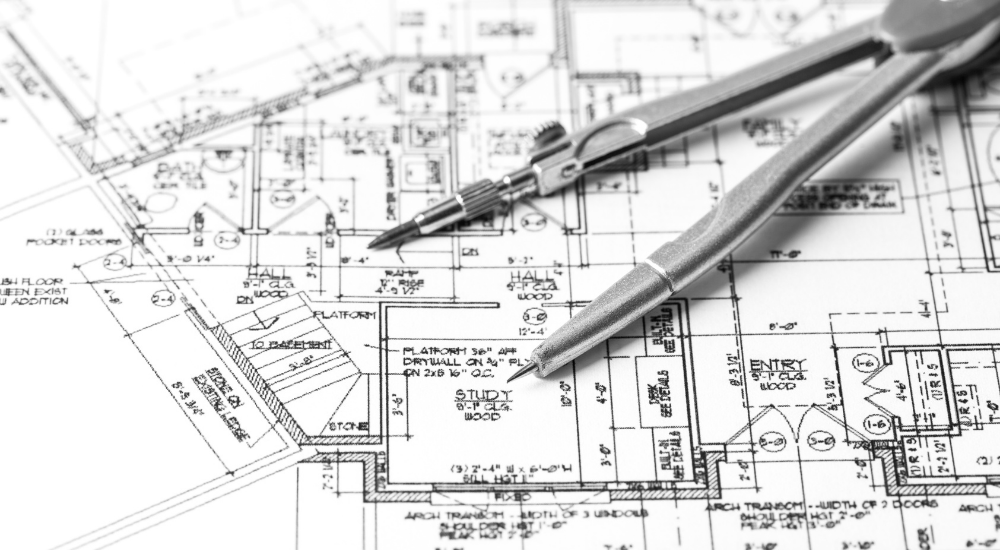Architect Checklist for New Commercial Projects
Architect Checklist for New Commercial Projects
Blog Article
Recognizing the Diverse Profession Paths Available for Aspiring Architect
As a hopeful Architect, you have a globe of occupation courses waiting for you. Whether you're drawn to traditional design or the nuances of sustainable style, there's a niche that straightens with your interests.
Conventional Style: Creating Structures and Structures
Typical architecture concentrates on making buildings and structures that mix capability with aesthetic allure. As you discover this area, you'll value the elaborate equilibrium between type and objective. You'll learn to attract motivation from historic styles, incorporating elements like proportion, materials, and craftsmanship. Your styles can mirror cultural heritage, showcasing local traditions while meeting modern requirements.
You'll create abilities in composing, model-making, and website analysis, permitting you to imagine and connect your concepts effectively. Engaging with customers, you'll require to understand their vision and translate it right into viable layouts.
In addition, constructing codes and sustainability practices are essential in your job, ensuring your frameworks are eco friendly and secure. As you expand in your profession, you'll locate opportunities in domestic, commercial, and even reconstruction jobs, each offering special challenges. Accepting typical architecture leads the way for a meeting occupation that admires the past while shaping the future.
Urban Preparation: Forming Communities and Public Spaces
As an ambitious Architect, you can play a crucial function as an urban organizer, changing just how neighborhoods interact and work. By using community involvement techniques, you'll guarantee that locals have a voice in shaping their setting. And also, integrating lasting design principles will certainly help produce areas that not only meet today's requirements but also protect the future.
Duty of Urban Planners
While many might think of architects as the sole visionaries behind buildings, city organizers play a vital function in shaping the broader landscape of areas and public spaces. By working together with numerous stakeholders, you'll help design parks, transportation systems, and household locations that advertise social communication and accessibility. Your expertise in spatial layout and area characteristics allows you to imagine future growth while maintaining social heritage.
Area Interaction Approaches
Reliable area engagement methods are essential for metropolitan organizers to guarantee that the voices of citizens are listened to and valued in the preparation procedure. To foster meaningful dialogue, you should focus on open discussion forums and workshops where community members can share their concepts and concerns. By proactively paying attention and including responses, you'll develop areas that show the neighborhood's requirements, inevitably leading to even more lasting and successful urban atmospheres.
Sustainable Layout Concepts
When creating urban rooms, incorporating sustainable design concepts is vital for creating settings that prosper both environmentally and socially. Take into consideration integrating environment-friendly rooms, like yards and parks, to boost biodiversity and boost air quality.
Designing with water preservation in mind is also vital-- consider rain yards and permeable surfaces to handle stormwater. Involving neighborhood members throughout the planning procedure warranties that the spaces you develop fulfill their requirements and urge social communication. By accepting these concepts, you'll contribute to dynamic, sustainable metropolitan landscapes that profit everyone.

Landscape Style: Creating Sustainable Exterior Atmospheres
As you discover landscape architecture, you'll discover crucial design principles that create attractive and practical outside areas. Lasting practices play an essential role in ensuring these environments grow while reducing ecological impact. And also, you'll find a range of career possibilities that enable you to make a real difference in just how individuals engage with nature.
Design Concepts in Landscape
Recognizing design concepts in landscape style is important for producing lasting exterior environments that balance with nature. You'll require to contemplate elements like equilibrium, proportion, and scale to ensure your designs really feel cohesive and inviting. Furthermore, pay focus to seasonal adjustments, developing with materials that enhance the environments year-round.
Sustainable Practices Overview
Sustainable methods in landscape architecture not just concentrate on aesthetic appeals but likewise focus on ecological health and source conservation. You can develop spaces that promote soil wellness, such as making use of organic materials and practicing permaculture concepts. Ultimately, these practices guarantee your designs profit both people and the atmosphere for years to come.
Profession Opportunities Expedition
With a solid foundation in sustainable methods, landscape architecture offers a variety of career paths that enable you to make a significant influence on the setting. You can work as a landscape designer, creating aesthetically pleasing and functional outdoor rooms, or focus on eco-friendly repair, assisting to revitalize damaged ecosystems. Urban planners often collaborate with landscape engineers to develop environment-friendly rooms in city settings, enhancing city livability. If you're enthusiastic about education, take into consideration becoming a landscape design educator, motivating future generations. In addition, you could collaborate with nonprofits concentrated on environmental sustainability or take part in research study to introduce brand-new practices. Each path not just forms lovely settings however likewise cultivates a healthier earth for future generations.
Sustainable Style: Focusing on Eco-Friendly Practices
As you explore your job in design, accepting eco-friendly methods can establish you apart in an affordable field. Sustainable design get redirected here concentrates on developing buildings that minimize environmental influence while enhancing occupant well-being. By incorporating sustainable products, energy-efficient systems, and lasting structure methods, you'll add to a greener future.
Start by getting knowledge of environment-friendly accreditations like LEED or BREEAM, which can strengthen your credentials. Take into consideration how natural light, air flow, and thermal performance can optimize design. Work together with designers and ecological consultants to innovate options that decrease waste and preserve sources.
Do not forget the importance of neighborhood involvement-- appealing regional stakeholders can influence styles that balance with the setting. As customers significantly focus on sustainability, your know-how in eco-friendly practices will not just bring in tasks yet additionally accomplish your enthusiasm for liable style. Welcome this critical facet of the career, and watch your occupation prosper.
Historical Conservation: Safeguarding and Recovering Social Heritage
While you commence on your building journey, take into consideration the necessary role of historical preservation in keeping our cultural heritage. This field concentrates on the security and repair of significant structures, sites, and structures that inform the stories of our past. By taking part in historic preservation, you'll help secure the architectural tradition that shapes area identity.
As a historical preservation Architect, you'll examine historic significance and evaluate the condition of structures. You'll work carefully with chroniclers and guardians to assure genuine reconstruction strategies are employed. This career path enables you to mix imagination with research study, allowing you to create options that appreciate initial materials and craftsmanship.
Your job not only contributes to sustainability by reusing existing structures yet likewise fosters a feeling of pride within areas. Embracing this course will aid you come to be a guardian of history, protecting the tales and aesthetic appeals that enhance our lives.
Inside Architecture: Enhancing Indoor Spaces
Historical conservation and indoor architecture both share a dedication to enhancing the built setting, however they focus on various elements. While historical conservation stresses keeping a framework's historical and cultural value, indoor style absolutely nos in on optimizing indoor rooms for capability and visual appeals.
As an ambitious Architect, you'll find that indoor design enables you to mix creativity with technical skills. You'll design areas that not just look excellent however likewise advertise comfort and performance. This area entails comprehending how light, shade, and products connect within an area, influencing mood and usability.
You'll function on various tasks, from property homes to industrial offices, making sure that each environment meets the demands of its owners. By focusing on individual experience, you can transform insides into inspiring and functional spaces, making a substantial effect on just how individuals interact with their environments. Welcome the chance to improve interior settings and form the method people function and live.
Industrial Design: Combining Capability With Aesthetic Appeals
Industrial design plays a necessary function in creating items that effortlessly blend aesthetics with functionality, ensuring that what you utilize daily is not just visually appealing but additionally functional. As an aspiring Architect, you might involve on your own in this field, concentrating on developing everything from furniture to customer electronic devices. Your work entails understanding customer demands, materials, and making processes, permitting you to create cutting-edge services that boost everyday experiences.
In commercial design, you'll often work together with manufacturers, online marketers, and designers, making certain that your designs are not only attractive but likewise practical. You'll find out to balance form and function, focusing on use without giving up design. By honing your skills in mapping out, 3D modeling, and prototyping, you'll be well-appointed to bring your ideas to life. This occupation course supplies a vibrant environment where creativity meets functionality, making it a satisfying option for designers curious about forming the items of tomorrow.
Regularly Asked Concerns
What Educational Credentials Do I Required to End Up Being an Architect?
To become an engineer, you'll require a professional level in design, generally a Bachelor's or Master's. In addition, you'll have to finish an internship and pass the Architect Enrollment Exam to practice legally.
Exist Accreditation Needs for Different Building Occupation Paths?
Yes, there're certification demands for various architectural courses. Architect. You'll need to pass tests, complete teaching fellowships, and in some cases seek specialized training, depending on your selected emphasis, like landscape architecture, city design, or historic conservation
What Software Abilities Are Essential for Designers Today?

How Can I Gain Practical Experience While Researching Design?
You can obtain functional experience click for more by interning at architectural firms, joining style competitors, volunteering for area jobs, or teaming up with classmates on real-world jobs. These opportunities improve your skills and directory develop beneficial connections in the sector.
What Job Opportunities Exist Outside Typical Architecture Firms?
You can discover numerous job chances outside traditional design companies, like city planning, interior decoration, landscape architecture, building monitoring, actual estate development, or also duties in sustainability consulting. Each deals distinct difficulties and incentives.
Whether you're attracted to traditional architecture or the subtleties of lasting design, there's a niche that aligns with your rate of interests.When developing city spaces, integrating lasting layout principles is essential for developing atmospheres that prosper both ecologically and socially.As you discover landscape architecture, you'll discover vital style principles that develop useful and beautiful outdoor areas.Comprehending style principles in landscape architecture is crucial for producing lasting exterior atmospheres that integrate with nature.In industrial layout, you'll usually collaborate with designers, manufacturers, and marketers, guaranteeing that your styles are not only stunning but additionally practical.
Report this page